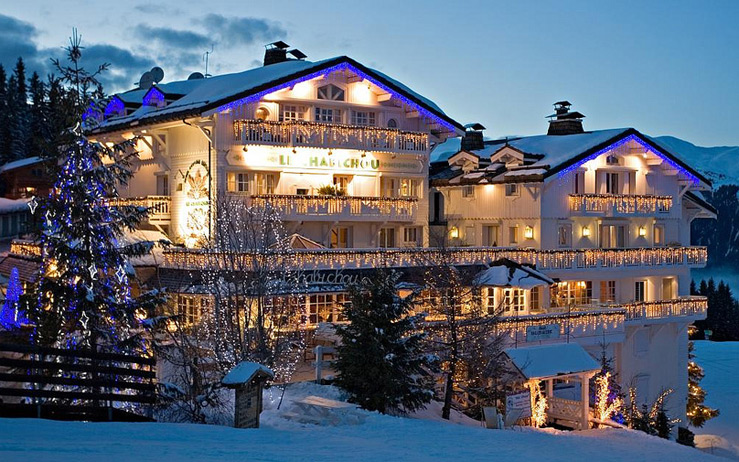FRANCE
 The coast of France stretches for 3 427 km. About 270 beaches on all coasts of France are marked with the ecological blue flag symbol Blue Flag.
The coast of France stretches for 3 427 km. About 270 beaches on all coasts of France are marked with the ecological blue flag symbol Blue Flag.
South of france
All beaches in the south of France are municipal. However, once every 4-5 years, some of the beaches are played at an auction between tenants and entrance to them becomes paid (about 20 EUR per day). This price includes the use of a sunbed, umbrella, mattress and shower. On nearby free beaches there is no equipment, but, as a rule, more people.
Cannes beaches in the south of France are loose sand. Most hotels are concentrated on the first line, and almost the entire coast of the sea along La Croisette is paid beaches. Just next to the Palais des Festivals there is a public beach (plage publique), where beach vacations are free.
To the west of Nice (southern coast of France: Cannes, Antibes, Juan-les-Pins, Saint-Tropez) there are sandy beaches, in Nice itself and further towards Italy they are pebbly. Unlike the Atlantic coast, the beaches on the southern coast of France, washed by the Mediterranean Sea, are not wide: a maximum of 30-40 meters.
Normandy
Normandy is a wonderful resort area in the north-west of the country, just 2-3 hours drive from Paris. Deauville is the most famous of the sea resorts of Normandy, 200 km away from Paris. There are magnificent sandy beaches without rocks and stones. For evening walks along the sea, a wide wooden flooring 800 m long has been laid. A peculiar “visiting card” of Deauville and a beautifully revitalizing landscape are special multi-colored beach umbrellas made of colorful stripes.
Brittany
A beach holiday in Brittany is especially good – in small bays hidden among the rocks. However, the water level in the sea here changes very noticeably. Therefore, vacationers bathe mainly at high tide, and at low tide they mostly collect shells and crabs, which the sea, retreating, leaves on the shore. Especially powerful tides in the northern part of Brittany.
Corsica
Corsica is famous for its magnificent landscapes – rocky shores, beautiful bays and bays, beautiful fine sand beaches.
Up Last changes: 01/18/2013
HISTORY
During the Late Bronze and Early Iron Age, the territory of France was inhabited by Gauls (Celts) and Iberians (south-west of France).
I c. BC e. – V century – the territory of France as part of Rome called Gaul. A Gallo-Roman population is being formed that speaks folk Latin, the basis of the French language.
V century – in Gaul, there were more than 100 cities. Under pressure from the German tribes of the Suevs, Burgundians and Franks, Roman troops moved away from the border along the Rhine, leaving part of Gaul to the Germans. The Visigoths occupied Aquitaine from the Loire to the Garonne and founded the Kingdom of Toulouse.
About 450 years – under the onslaught of the Anglo-Saxons, part of the British tribes migrated from the British Isles to the Armorica Peninsula (modern Brittany), the ethnic identity of this province is still preserved.
451 year – the invasion of the Huns. Roman troops and Frankish squads defeated the Huns of Attila in the Battle of the Catalan Fields, near Troyes.
V century, last quarter – the Visigoths captured Gascony, Provence and almost all of Spain, as well as the central regions (modern Bury, Limousine and Auvergne). In the valleys of Sona and Rhone, the Burgundians founded the Kingdom of Burgundy.
482 year – the northern regions from the Loire to the Somme and Maas subjugated the tribal union of the Franks. The ruler of the Franks, Holdwig, founded the Frankish state of the Merovingians. The Franks retained Roman cities and a control system.
496 – Franks adopted Christianity according to the Roman rite, which provided them with the support of the pope against the rest of the Germanic tribes who professed Arianism.
VI century, beginning – the first edition of the Salicheskaya Pravda was created – a set of laws that included the norms of unwritten (customary) law and the norms of early feudal law. For the Gallo-Roman population, the rules of Roman law are preserved.
511 year – Holdvig died. The Frankish state scattered on the inheritance of his sons.
VI century, middle – the Franks established their rule, subjugating the Visigoths and Burgundians. The Frankish state of Merovingian formed. Feudal landed property began to take shape under the influence of the Germans in Gaul.
VI century, end – VII century, beginning – during the internecine wars four parts of the Frankish state took shape: Neustria (in the northwest, with a center in Paris and mainly the Galo-Roman population, Burgundy (in the east), Aquitaine (in the southwest ) and Australia (the north-eastern part of Gaul, populated by the East Franks later became part of Germany).
687 – Mayord Pepin II (the manager of the royal domain, appointed by the king) concentrated in his hands the real power in the Frankish state.
732 is the battle of Poitiers. Frankish Mayor Karl Martell (nickname means “hammer”) defeated the Arabs, stopping their advance inland.
737 – Karl Martell seized power in the Frankish state.
751 year – Pepin III the Short exiled the last king from the Merovingian clan to the monastery and founded the new Carolingian dynasty.




